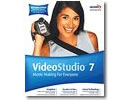'ZDNET Recommends': What exactly does it mean?
ZDNET's recommendations are based on many hours of testing, research, and comparison shopping. We gather data from the best available sources, including vendor and retailer listings as well as other relevant and independent reviews sites. And we pore over customer reviews to find out what matters to real people who already own and use the products and services we’re assessing.
When you click through from our site to a retailer and buy a product or service, we may earn affiliate commissions. This helps support our work, but does not affect what we cover or how, and it does not affect the price you pay. Neither ZDNET nor the author are compensated for these independent reviews. Indeed, we follow strict guidelines that ensure our editorial content is never influenced by advertisers.
ZDNET's editorial team writes on behalf of you, our reader. Our goal is to deliver the most accurate information and the most knowledgeable advice possible in order to help you make smarter buying decisions on tech gear and a wide array of products and services. Our editors thoroughly review and fact-check every article to ensure that our content meets the highest standards. If we have made an error or published misleading information, we will correct or clarify the article. If you see inaccuracies in our content, please report the mistake via this form.
VideoStudio 7


Video Studio 7.0
pros and cons
- MicroMV and DVD-VR support keyframeable effects intuitive interface overlay track and transparency controls.
- Animated effects icons are irritating A/B track view not available adds transitions between clips by default.
Although it faces stiff competition from Pinnacle's and MGI/Roxio's products (not to mention free applications like Windows Movie Maker 2 and the upcoming FreeDV from Avid), VideoStudio has been around for some time, giving Ulead plenty of opportunity to iron out any wrinkles. Version 7 is the latest, and brings some welcome updates to both the interface as well as the feature set.
As with previous versions, VideoStudio 7 promotes a linear workflow with a seven-button menu bar running across the top, a single preview pane for both clips and project previews, the timeline, navigation and dynamic panes that adjust to suit the current task. Unlike some, this workspace can be resized, giving you a larger preview pane (that can also be made full screen), although it won't split across multiple monitors. You can opt for the simpler storyboard mode, but the timeline contains both a primary video track and overlay for picture in-picture effects, a narrative track, a background audio track and a title/graphics track, with real-time (almost) software-based preview that supports multiple simultaneous effects. Also worth noting is that effects and filters are all keyframeable and customisable -- a level of control not often found in a sub-£50 package.
Ulead also has an eye on future video developments, which is why VideoStudio 7 supports the DVD-VR and +RW standards used by new DVD-based camcorders, as well as the MicroMV MPEG2 format used by Sony camcorders like the DCR-IP220E. As you'd expect, VideoStudio includes a video capture tool, and this now includes batch capture with scene analysis for creating sub-clips from a single larger clip. You can also capture direct to MPEG2 to save hard disk space, much like Pinnacle's Studio 8 but without the latter product's draft mode option.
Other new features include the increasingly popular and very useful rate control option for speeding or slowing your clips, as well as a rather handy multi-cut non-destructive editing tool. This lets you delete unwanted material from a clip without altering the original, so you can quickly chop out the dead footage without having to create multiple sub-clips. You also get a full range of image adjustments including colour, contrast, balance, hue, saturation and sharpness (again, all keyframeable), as well as the SE version of Ulead's Cool3D titler and graphics designer.
VideoStudio 7's DVD authoring tool isn't as well integrated as Pinnacle Studio 8's, and still looks much like the DVD Plug-In from which it was first developed, but it still lets you create a VideoCD or DVD from the timeline without having to transcode your material first. Two new features here are round-trip editing and dual-layer menus. The former lets you make changes half way through a disk burn, then return and pick up where you left off; the latter lets you create nested menus -- a common requirement for scene selection menus driven off the main menu.
Things we'd change include the default insertion of a transition when you add clips to the timeline, the manic animation of the transitions menu, which is as distracting now as it's always been; an A/B edit view that lets you see transitions in between two video tracks would be a very useful addition, too. Although the interface isn't as slick as Pinnacle Studio 8's, we like VideoStudio 7's combination of price, simplicity and control, and feel that the keyframeable effects, overlay video track and wide support for new video standards make it one of the best consumer-orientated non-linear editors (NLEs) on the market today.